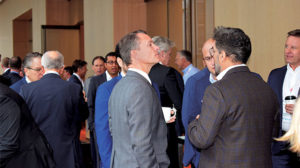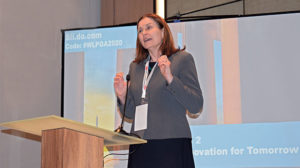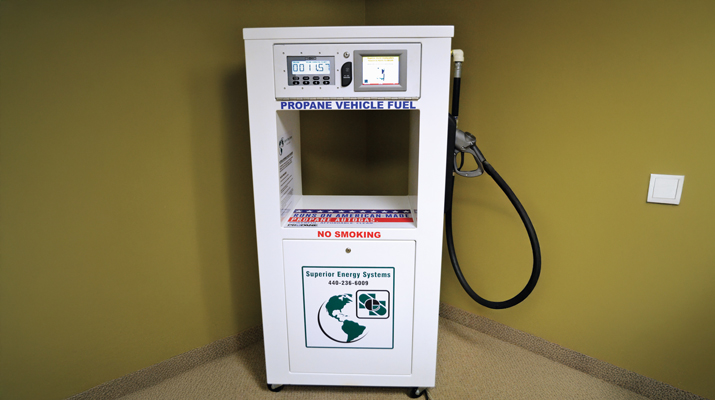Leaders gather to discuss LPG’s future
LP Gas attended the World LPG Association (WLPGA) Innovation for Growth Summit in Washington, D.C. Here are our 10 takeaways from the February event, which drew more than 150 delegates from more than 20 countries to the nation’s capital.

The WLPGA’s Innovation for Growth Summit provided a forum for propane and allied industries to discuss the future of LPG. Photo by LP Gas Staff
1. When the WLPGA partners with the National Propane Gas Association and the Propane Education & Research Council on an Innovation Summit, people take notice. We were impressed with the level of attendance at the summit. Not only were the leaders of these organizations in attendance, but we also spotted Ferrellgas interim CEO Jim Ferrell and Suburban Propane CEO Michael Stivala, and we sat down alongside former AmeriGas CEO Gene Bissell and his wife Joann at a D.C. restaurant. Numerous heads of propane marketer companies and key vendor companies (e.g., Bergquist, RegO, Roush CleanTech and Superior Energy Systems) were also in attendance.
2. The summit made clear the dire need for the propane and LPG industry to unite in the United States and around the globe. We’re already seeing the push in pockets of the country, in some form or another, to ban the use of fossil fuels. Presenters at the Innovation Summit referenced the same wave building worldwide to reduce hydrocarbon consumption. Says Brian Worrall, head of sustainability for DCC, “The energy transition may feel a long way off. It is an issue for all of us in this room today. It’s not something we can leave to another generation.”
3. It’s time to engage the “decarbonizers,” those groups wanting to move away from fossil fuel use and toward more renewable resources. “They’re hungry for partnerships and hungry for ways to innovate,” says Gordon Feller, founder of Meeting of the Minds, a global thought leadership network. “It’s our moment of leverage: We’re affordable, accessible, efficient and much more green than existing solutions. We’re awash in this source of fuel.”
4. Governments have a role to play: to create a level playing field for all energy competitors and to encourage all new technologies, DCC’s Worrall says. “The point for us and governments: There’s no certain path here. Nobody knows which of these is going to win,” he adds.

Rebecca Groen, director of biofuels at SHV Energy, moderates a panel during the WLPGA summit. Photo by LP Gas Staff
5. It’s intriguing to think how LPG can work with another three-letter acronym: DME, or dimethyl ether. Rebecca Boudreaux, president of California-based Oberon Fuels, presented on how renewable DME can partner with propane to decarbonize transportation. She explained how DME looks similar to LPG; it is a clean, colorless gas that is easy to liquefy and transport. In renewable form, DME can be made from dairy manure, food waste and other renewable feedstocks. It can then be blended with propane to reduce the carbon intensity of transportation fuel.
6. Consider hydrogen. Rodney Allam of NET Power presented on a process that converts natural gas or LPG to hydrogen, which can be used for vehicle fuel, heating and power production. “The industry can go into the hydrogen business,” he says. “It’s complementary to your work with LPG.” A key part of Allam’s presentation centered on capturing carbon dioxide emissions. He told attendees, “You can use your product as a feedstock. It’s a real opportunity because you have expertise in production, distribution and marketing.”
7. Propane’s unique properties have drawn the attention of Indiana-based engine manufacturer Cummins Inc. Sam Geckler, a product line architect at Cummins, says the company is “investigating” propane, as it set out to create a durable truck engine. Geckler outlined Cummins’ B6.7 propane concept engine architecture and says the company is excited to demo the engine this year in a Peterbilt vehicle used for propane delivery.
8. You can’t talk innovation without discussing the role of technology. Companies like Anova and Cavagna presented on tank monitoring and smart metering solutions, respectively, providing a look at the technology transition taking place in the industry.
9. Henry Cubbon, managing director of DCC LPG, underscored the need for collaboration: with groups working to provide new sources of propane that are nearly identical to our product (e.g., renewable propane and DME); collaboration with product and service providers – “They’re trying to get us into the 21st century and beyond,” he says; collaboration and engagement with our own people – “We need to invest in our people, invest in our businesses and places for young people to work,” he says. “We need to rejuvenate our industry.”
10. Where we go from here might not be completely certain. But, as James Rockall, CEO of the WLPGA, says, “The decisions we make in the coming months and years will determine whether we can realize the future that we all hope we have.”

















Great summation.
Short but punchy top 10. Well done.
Would be good if a similar synopsis could be provided on overseas LPG conferences.